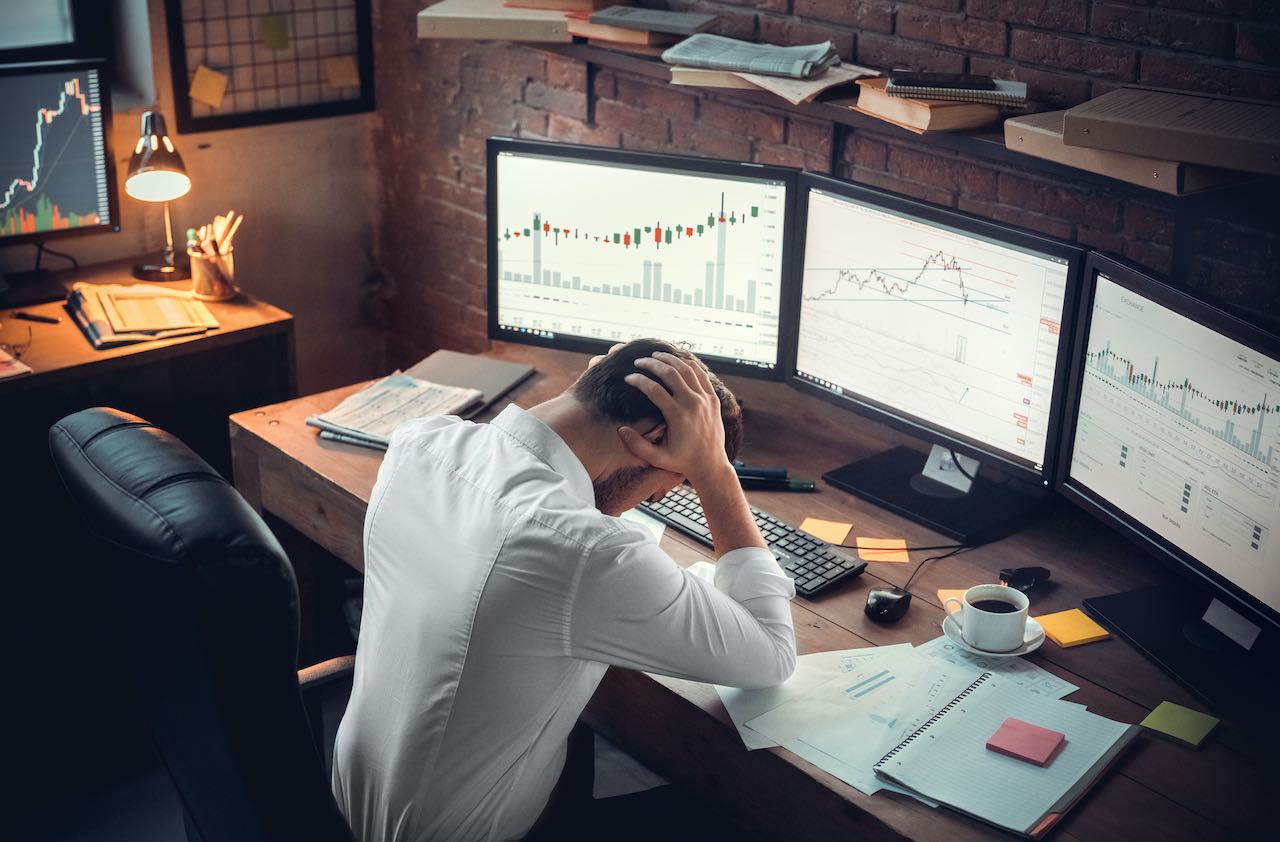Five Great Funds for 2007
Funds that specialize in blue chips -- large, growing companies -- are poised to shine. And strong managers make a world of difference. Here are my favorite picks.

You don't need to take big risks to excel in funds this year. With the economy slowing but not headed for recession, inflation and interest rates low, and stocks priced relatively inexpensively, funds with the right mix of equities should do quite well.
I think funds that specialize in blue-chip stocks, both at home and abroad, are the place to put the bulk of your money. Emphasize funds that buy growth companies, which are cheap after seven bad years. It's time to lighten up on some of the chancier parts of the market.
Take stocks of small companies. By definition they're riskier than large-company stocks. Yet small caps are trading at huge premiums to large caps. It's time to sell some small caps and swap into large caps. Move 5% to 10% of your stock fund money. Don't completely redo your portfolio based on what looks good for this year. (For analysis from Kiplinger's Personal Finance, see Where to Invest in 2007.)

Sign up for Kiplinger’s Free E-Newsletters
Profit and prosper with the best of expert advice on investing, taxes, retirement, personal finance and more - straight to your e-mail.
Profit and prosper with the best of expert advice - straight to your e-mail.
Real Estate Investment Trusts (REITs) are probably the most overpriced sector of the market today. The MSCI U.S. REIT returned 35% in 2006 and has soared an annualized 23% over the past five years. Commercial real estate simply isn't yielding the profits to sustain that trend.
On the bond side, high-yield "junk" bonds offer high risks. Yields are just 3.5% above Treasuries, not enough to compensate you for the danger of defaults. You'll do better in a high-grade corporate bond fund, such as Harbor Bond (HABDX), or a good muni fund, such as Fidelity Intermediate Municipal Income (FLTMX).
But the lion's share of your money belongs in stock funds. Here are my five favorites. All are no-loads except Legg Mason Opportunity.
Bridgeway Aggressive Investors 2 (BRAIX)
John Montgomery's fund had an uncharacteristically poor year in 2006, returning just 5%. Over the past five years, however, the fund has returned an annualized 11% -- five percentage points per year better than Standard and Poor's 500-stock index. And Montgomery runs this fund nearly identically to older sibling Aggressive Investors 1, which has returned an annualized 20% since inception in 1994. Aggressive Investors 1 is closed to new investors.
Montgomery and his colleagues pick stocks using sophisticated computer programs. That led them to a bad bet on energy stocks last year. They're still bullish on energy but have added more tech stocks to the mix. This is a volatile fund, but if you can hang on through the inevitable dips, it should serve investors well. The fund provides ballast in owning stocks of all shapes and sizes, but you'll find more midsize and small companies here than in any of the other funds in this article.
Houston-based Montgomery is a friendly guy, but don't look for him to reveal much about the workings of his computer models, some of which look for growth companies and some of which hunt for undervalued stocks. His reticence is actually a blessing in disguise: It has largely kept institutional money away. Consequently, assets in this fund are a mere $600 million. I think he's the best quant running a mutual fund today.
Dodge & Cox International Stock (DODFX)
Not all the great companies are in the U.S. You'd be a fool to ignore foreign stock markets, especially at a time when the dollar may well weaken further. And you can't do much better for foreign stocks than Dodge & Cox International. The San Francisco-based firm boasts one of the best stock research teams of any fund and an impeccable pedigree. Dodge & Cox has been in business since the late 1920s; flagship Dodge & Cox Stock is closed to new investors. But International is hardly a slouch. It has returned an annualized 21% the past five years. Turnover averages less than 10% annually, and the expense ratio is just 0.70%.
In a growth-led stock market, you'd expect a value-driven fund like this to take a well-deserved rest. But, judging from its holdings, Dodge & Cox International appears poised to do well. The fund has 18% of assets in emerging markets and maintains big stakes in computer hardware and media, as well as its customary large position in financial stocks, more traditional value fare.
Legg Mason Opportunity (LMOPX)
The streak is over. Long live the streak. Bill Miller's 15-year run of beating the S&P 500 ended last year at Legg Mason Value, which returned just 6%. But that doesn't mean Miller isn't one of the best money managers of the era. What's more, Legg Mason Opportunity, Miller's other fund, returned 13% this year. Since inception in late 1999, Opportunity has beaten Value every calendar year. That's a streak worth talking about. I've been pounding that table for this fund since shortly after it opened. (See one of my previous columns for more about Bill Miller's funds.)
Opportunity has just $7 billion in assets, enabling Miller to buy midsize companies too small to make an impact in Value. The fund is much more maneuverable than Value, and it has the ability to take short positions on stocks or indexes, as Miller sees fit. He's nothing if not eclectic. Many of his holdings are plain-vanilla value stocks. Others -- such as Amazon, NetEase and Sepracor -- sell at sky-high multiples. His intensive research, obsessive work ethic and willingness to double down on losing stocks are some of the attributes that have contributed to his success. The one negative: Opportunity is a load fund, which boosts its expense ratio to a lofty 2.08% annually.
Marsico Growth (MGRIX)
Tom Marsico may be the nation's best investor in stocks of large, growing companies. After a nine-year stint running Janus Twenty, Marsico jumped ship in 1997 to open his own shop across town in Denver. Beleaguered Janus can only wish they had him back. Marsico and his colleagues are now running more than $60 billion, but asset growth hasn't hurt performance because Marsico specializes in stocks of large companies and because he has steadily expanded his analyst team.
Marsico Growth has returned an annualized 7% over the past five years -- good enough to put it in the top 10% among large-company growth funds, according to Morningstar. The fund was only up 7% this year, but again, that was better than most of its peers. Marsico spends a lot of time forecasting big-picture trends, but he and his analysts also know how to tear apart companies. "At the end of the day, we're stock jockeys," he says. A 6% holding in UnitedHealth Group hurt performance last year (Marsico remains confident in UnitedHealth, which was hit with allegations of options backdating).
T. Rowe Price Growth Stock (PRGFX)
Don't look for anything fancy here. Bob Smith, in his tenth year at the helm, is like most T. Rowe managers: He buys growing companies selling at reasonable prices. In Smith's case, he looks for large companies and mega caps. A common-sense approach and a hard-working analyst staff has yielded both short- and long-term success. The fund earned 14% last year -- excellent in a lackluster market for Smith's brand of stocks. The fund has returned an annualized 6% over the past five years, a period when most large-cap growth funds lost money. Over the past ten years, the fund has earned an annualized 9%, putting it in the top 10% among its peers.
Chalk it up to good stock picking. Smith isn't an index hugger, but he generally won't invest more than 1.5 times what the S&P has in a broad industry sector. Right now, he's making his biggest wagers on health care and consumer services.
Happy investing, and may you have a prosperous new year.
Steven T. Goldberg is an investment adviser and freelance writer.
Get Kiplinger Today newsletter — free
Profit and prosper with the best of Kiplinger's advice on investing, taxes, retirement, personal finance and much more. Delivered daily. Enter your email in the box and click Sign Me Up.

-
 Stock Market Today: Stocks Gain on Tech, Auto Tariff Talk
Stock Market Today: Stocks Gain on Tech, Auto Tariff TalkThe Trump administration said late Friday that it will temporarily halt tariffs on some Chinese tech imports.
By Karee Venema
-
 Sam's Club Plans Aggressive Expansion: Discover Its New Locations
Sam's Club Plans Aggressive Expansion: Discover Its New LocationsSam's Club expansion plans will open up to 15 new stores each year. Learn where they plan to open in 2025.
By Sean Jackson
-
 ESG Gives Russia the Cold Shoulder, Too
ESG Gives Russia the Cold Shoulder, TooESG MSCI jumped on the Russia dogpile this week, reducing the country's ESG government rating to the lowest possible level.
By Ellen Kennedy
-
 Morningstar Fund Ratings Adopt a Stricter Curve
Morningstar Fund Ratings Adopt a Stricter Curveinvesting Morningstar is in the middle of revamping its fund analysts' methodology. Can they beat the indices?
By Steven Goldberg
-
 Market Timing: The Importance of Doing Nothing
Market Timing: The Importance of Doing NothingInvestor Psychology Investors, as a whole, actually earn less than the funds that they invest in. Here’s how to avoid that fate.
By Steven Goldberg
-
 Commission-Free Trades: A Bad Deal for Investors
Commission-Free Trades: A Bad Deal for Investorsinvesting Four of the biggest online brokers just cut their commissions to $0 per transaction. Be careful, or you could be a big loser.
By Steven Goldberg
-
 Vanguard Dividend Growth Reopens. Enter at Will.
Vanguard Dividend Growth Reopens. Enter at Will.investing Why you should consider investing in this terrific fund now.
By Steven Goldberg
-
 Health Care Stocks: Buy Them While They're Down
Health Care Stocks: Buy Them While They're Downinvesting Why this sector should outperform for years to come
By Steven Goldberg
-
 Buy Marijuana Stocks Now? You'd Have to Be Stoned.
Buy Marijuana Stocks Now? You'd Have to Be Stoned.stocks Don't let your investment dollars go to pot
By Steven Goldberg
-
 4 Valuable Lessons From the 10-Year Bull Market
4 Valuable Lessons From the 10-Year Bull MarketInvestor Psychology Anything can happen next, so you must be mentally prepared.
By Steven Goldberg